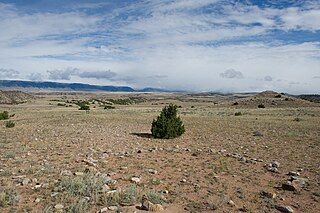
Stonehenge is a prehistoric megalithic structure on Salisbury Plain in Wiltshire, England, two miles (3 km) west of Amesbury. It consists of an outer ring of vertical sarsen standing stones, each around 13 feet (4.0 m) high, seven feet (2.1 m) wide, and weighing around 25 tons, topped by connecting horizontal lintel stones. Inside is a ring of smaller bluestones. Inside these are free-standing trilithons, two bulkier vertical sarsens joined by one lintel. The whole monument, now ruinous, is aligned towards the sunrise on the summer solstice and sunset on the winter solstice. The stones are set within earthworks in the middle of the densest complex of Neolithic and Bronze Age monuments in England, including several hundred tumuli.

America's Stonehenge is a privately owned tourist attraction and archaeological site consisting of a number of large rocks and stone structures scattered around roughly 30 acres within the town of Salem, New Hampshire, in the United States. It is open to the public for a fee as part of a recreational area which includes snowshoe trails and an alpaca farm.

A megalith is a large stone that has been used to construct a prehistoric structure or monument, either alone or together with other stones. There are over 35,000 in Europe alone, located widely from Sweden to the Mediterranean sea.

Alexander Thom was a Scottish engineer most famous for his theory of the Megalithic yard, categorisation of stone circles and his studies of Stonehenge and other archaeological sites.

Historically, most medicine wheels follow a similar pattern of a central circle or cluster of stones, surrounded by an outer ring of stones, along with "spokes" radiating from the center out to the surrounding ring. Often, but not always, the spokes may be aligned to the cardinal directions. In other cases, some stones may be aligned with astronomical phenomena. These stone structures may be called "medicine wheels" by the Indigenous nation which built them, or by more specific names in that nation's language.

UCL's Institute of Archaeology is an academic department of the Social & Historical Sciences Faculty of University College London (UCL) which it joined in 1986 having previously been a school of the University of London. It is currently one of the largest centres for the study of archaeology, cultural heritage and museum studies in the world, with over 100 members of staff and 600 students housed in a 1950s building on the north side of Gordon Square in the Bloomsbury area of Central London.

Petroforms, also known as boulder outlines or boulder mosaics, are human-made shapes and patterns made by lining up large rocks on the open ground, often on quite level areas. Petroforms in North America were originally made by various Native American and First Nation tribes, who used various terms to describe them. Petroforms can also include a rock cairn or inukshuk, an upright monolith slab, a medicine wheel, a fire pit, a desert kite, sculpted boulders, or simply rocks lined up or stacked for various reasons. Old World petroforms include the Carnac stones and many other megalithic monuments.
Michael Parker Pearson, is an English archaeologist specialising in the study of the Neolithic British Isles, Madagascar and the archaeology of death and burial. A professor at the UCL Institute of Archaeology, he previously worked for 25 years as a professor at the University of Sheffield in England, and was the director of the Stonehenge Riverside Project. A prolific author, he has also written a variety of books on the subject.
Below are notable events in archaeology that occurred in 1947.

Writing-on-Stone Provincial Park is located about 100 kilometres (60 mi) southeast of Lethbridge, Alberta, Canada, or 44 kilometres (30 mi) east of the community of Milk River, and straddles the Milk River itself. It is one of the largest areas of protected prairie in the Alberta park system, and serves as both a nature preserve and protection for many First Nations (indigenous) rock carvings and paintings. The park is sacred to the Blackfoot and many other aboriginal tribes.
Archaeoacoustics is a sub-field of archaeology and acoustics which studies the relationship between people and sound throughout history. It is an interdisciplinary field with methodological contributions from acoustics, archaeology, and computer simulation, and is broadly related to topics within cultural anthropology such as experimental archaeology and ethnomusicology. Since many cultures have sonic components, applying acoustical methods to the study of archaeological sites and artifacts may reveal new information on the civilizations examined.

Rujm el-Hiri is an ancient megalith consisting of concentric circles of stone with a tumulus at center. It is located in the Israeli-occupied territories of the Golan Heights some 16 kilometres (9.9 mi) east of the coast of the Sea of Galilee, in the middle of a large plateau covered with hundreds of dolmens.

The Medicine Wheel/Medicine Mountain National Historic Landmark is a medicine wheel located in the Bighorn National Forest, in the U.S. state of Wyoming. The Medicine Wheel at Medicine Mountain is a large stone structure made of local white limestone laid upon a bedrock of limestone. It is both a place of sacred ceremony and scientific inquiry. In Native Science these uses are not distinguished as separate as they are in Western science.
Astronomical chronology, or astronomical dating, is a technical method of dating events or artifacts that are associated with astronomical phenomena. Written records of historical events that include descriptions of astronomical phenomena have done much to clarify the chronology of the Ancient Near East; works of art which depict the configuration of the stars and planets and buildings which are oriented to the rising and setting of celestial bodies at a particular time have all been dated through astronomical calculations.

There is evidence of prehistoric human habitation in the region known today as the U.S. state of Wyoming stretching back roughly 13,000 years. Stone projectile points associated with the Clovis, Folsom and Plano cultures have been discovered throughout Wyoming. Evidence from what is now Yellowstone National Park indicates the presence of vast continental trading networks since around 1,000 years ago.

Tipi rings are circular patterns of stones left from an encampment of Post-Archaic, protohistoric and historic Native Americans. They are found primarily throughout the Plains of the United States and Canada, and also in the foothills and parks of the Rocky Mountains.

Archaeology in Saskatchewan, Canada, is supported by professional and amateur interest, privately funded and not-for-profit organizations, and governmental and citizen co-operation with the primary incentive to encourage archaeological awareness and interest in the heritage that defines the province to this date. The landscape of Saskatchewan hosts substantial prehistoric and historic sites.
The Majorville Cairn and Medicine Wheel is an archaeological site of the Blackfoot Nation located south of Bassano, Alberta. The medicine wheel has been dated to 3200 BCE by careful stratification of known artifact types.
Terence Meaden is an English author who writes on archaeoastronomy, mostly focusing on the megalithic sites of Avebury, Stonehenge and the Drombeg stone circle in Cork, Ireland. He is a retired physicist with a doctoral degrees in physics from the University of Oxford and a master's degree in applied landscape archaeology also from University of Oxford. Meaden is influenced by the work of archaeologist Marija Gimbutas who wrote about the Goddess worshipping Neolithic and Bronze Age cultures of "Old Europe".












